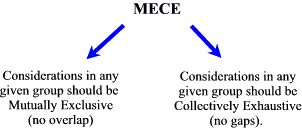 |
|
|
|
|
| Tutorial 6 - Macrostructure | |
The first five tutorials looked in considerable detail at the fine structure of reasoning, looking at issues arising when mapping one or at most two simple arguments. Yet real-world reasoning on topics of any importance is usually much more complicated, involving dozens or even hundreds of claims and inferences.
In this final tutorial we look at some of the issues involved in mapping this sort of complex reasoning. We look at the macrostructure of argumentation, i.e., the structure at a scale involving anywhere from a handful to hundreds of reasons and objections.
Just as arguments can be well built or poorly built at the local (simple argument) level, so also they can be well built or poorly built in their overall structure. Mapping out a complex argument makes it much easier to see that overall structure and how it might be improved.
This tutorial introduces two fundamental macrostructural rules. The first is the Pyramid Rule, which says, roughly, that a properly-constructed argument will be shaped like a pyramid. It has two main aspects:

The second macrostructural rule is known by the acronym MECE, which stands for "Mutually Exclusive, Collectively Exhaustive." It also has two main aspects, which boil down to the simple idea that in any group of reasons or objections, there should be no overlaps and no gaps.

Observing these rules will help ensure that the overall argument is sound and complete.
| Glossary | Contents | |
|
Copyright © Critical Thinking Skills BV - |
|